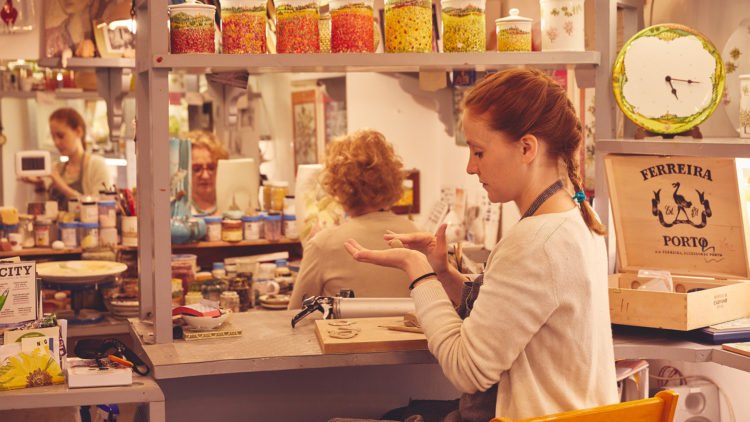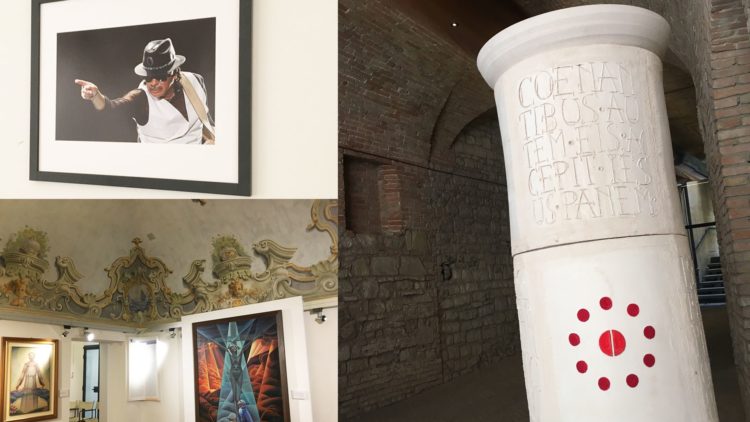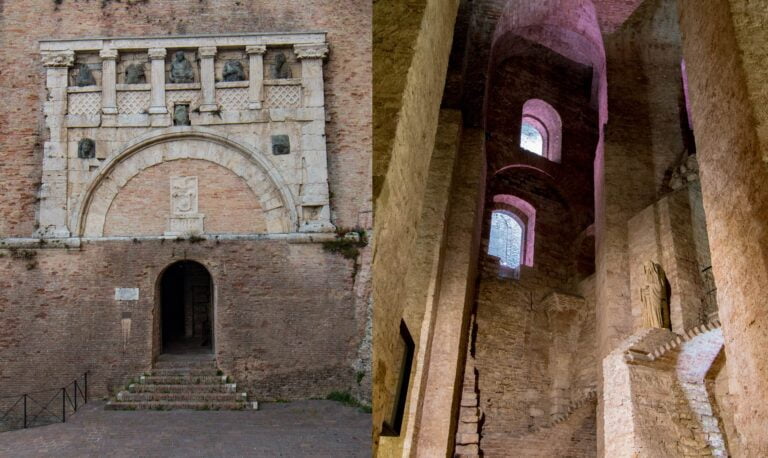10 Delicious Umbrian Foods to Taste in Perugia
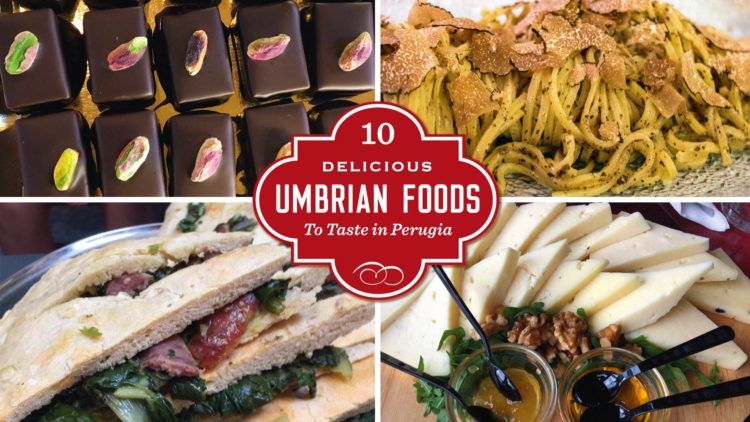
Thanks to Perugina and its world-famous Baci, the city of Perugia is known for chocolates. But there’s so much more to Perugia’s culinary scene for food-curious travelers! In Perugia you can try the best Umbrian foods in excellent restaurants that were personally tried and tasted by us at Via del Vino Tours.
Umbria offers a bounty of “prodotti tipici” (typical products) linked to centuries-old peasant traditions. The region’s cuisine uses fresh, quality ingredients in the most natural state possible. Every Umbrian dish embodies unique flavors and ancient customs handed down over the centuries.
Here are the top 10 Umbrian foods to try on your next visit to Perugia and where to eat them!
1. Truffles:
Known as a delicacy since ancient times, the humble-looking truffle was once considered a divine creation endowed with aphrodisiac properties. Highly prized truffles grow abundantly in the Umbrian countryside, where you can hunt for every variety just steps from Perugia’s historic center. You’ll find them shaved on grilled meats, used to flavor cheeses and salami, scrambled into eggs, formed into dumplings, preserved in spreads and sautéed with butter to make a heavenly pasta sauce. To experience Perugia’s best truffles, stop for lunch or dinner at Osteria a Priori, an all-Umbrian food eatery on Via dei Priori. For dinner try Al Tartufo a truffle-focused restaurant on Via Ulisse Rocchi. You can also purchase preserved, all-natural truffle products at Osteria a Priori. To ship fresh, Umbrian truffles worldwide, visit Trovatore Truffles.
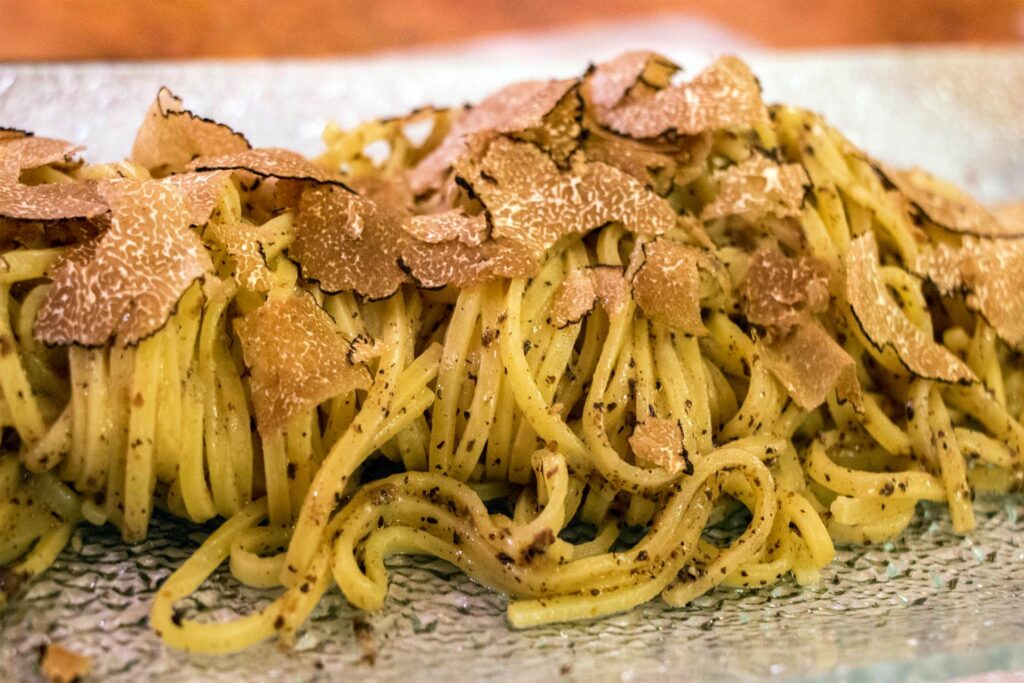
Photo Credit: John Ludas
2. Pecorino & Caciotta Cheeses:
Some say the cheeses of Umbria resemble its inhabitants—simple, authentic and boldly flavored. From sweet and creamy to cave-aged and sharp, Umbria serves up a variety of Pecorino (sheep’s milk) and Caciotta (semi-soft) cheeses to nibble on with a glass of local, dry wine or at the end of your meal before dessert. For a quick and friendly aperitivo with a selection of local cheeses, Umbrian meats and a glass of wine served in a no-frills cup, stop by La Bottega di Perugia in Piazza Morlacchi. For a more extensive wine list, Turreno Caffè in Piazza Danti is a great spot to have an aperitivo, stay for dinner, eat drink, and people watch.
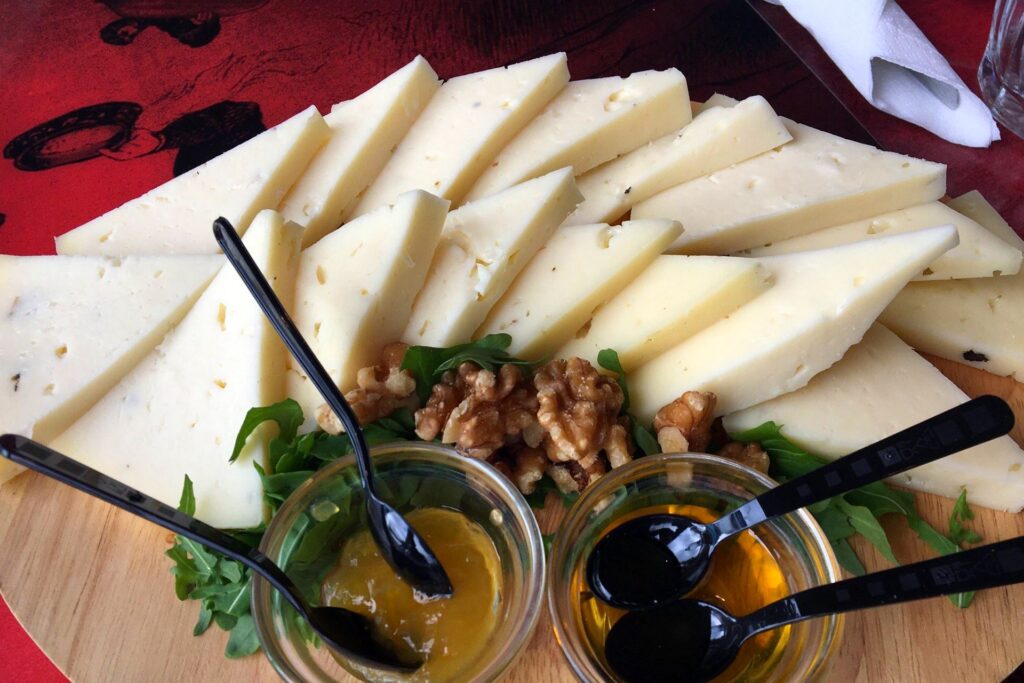
3. Prosciutto di Norcia:
Of course, no cheese plate should be missing this savory, cured ham. Prosciutto is famous all over Italy, but certain designations stand out for their quality. One of these, Prosciutto di Norcia is an Umbrian staple from Norcia, a town so famous for its butchery products that the term “Norcineria” is synonymous with quality meats and butchery products not only in Umbria but also all over Italy. To sample hand cut or sliced prosciutto di Norcia order a “tagliere” plate at Locanda del Bartoccio in Piazza Matteotti or stop by the deli counter at Umbrò Cafe on Via Oberdan.
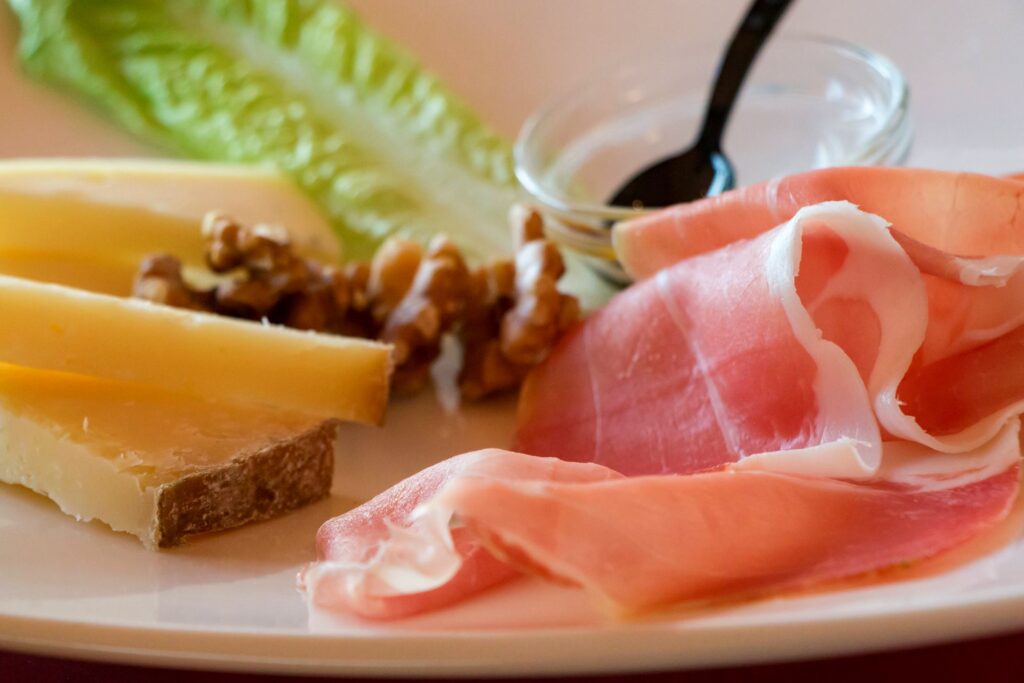
Photo Credit: John Ludas
4. Porchetta:
Tracing its ancient origins to a city just outside of Rome, this savory, herb-packed boneless pork roast takes center stage as street food in Perugia. It owes its unique central Italian flavor to a type of wild fennel that only grows in Umbria. Pick up a Porchetta sandwich at the stand of Antica Salumeria Granieri Amato in Piazza Matteotti, then enjoy it while people-watching on the Cathedral steps in Piazza IV Novembre.
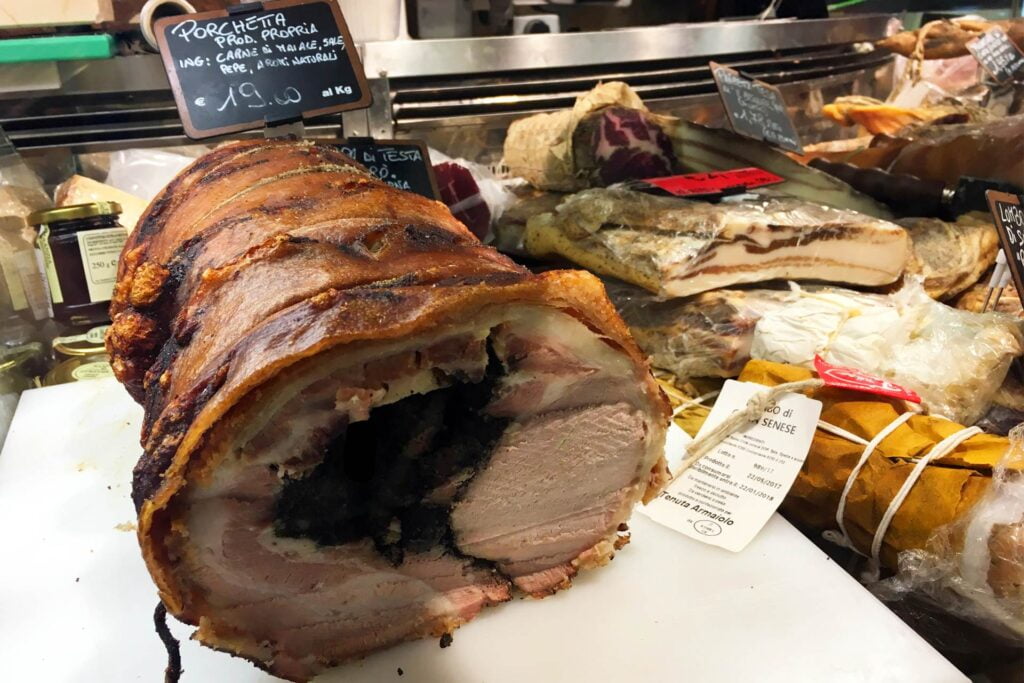
5. Salsiccia Secca:
As this list shows—nobody would accuse the Umbrians of eating too little pork! This dried sausage is yet another example of delicious, typical Umbrian charcuterie. To the foreign eye, these lean, lightly seasoned, and air-dried sausages look like a smaller version of salami when sliced. They are perfect on a cheese plate with crusty bread and crackers or, as is the tradition in the region, eaten alone with savory, cheesy Easter Bread. You’ll find this specialty on “tagliere” (cold cut plates) all over Perugia or try it on a sandwich at La Bottega di Perugia in Piazza Morlacchi.
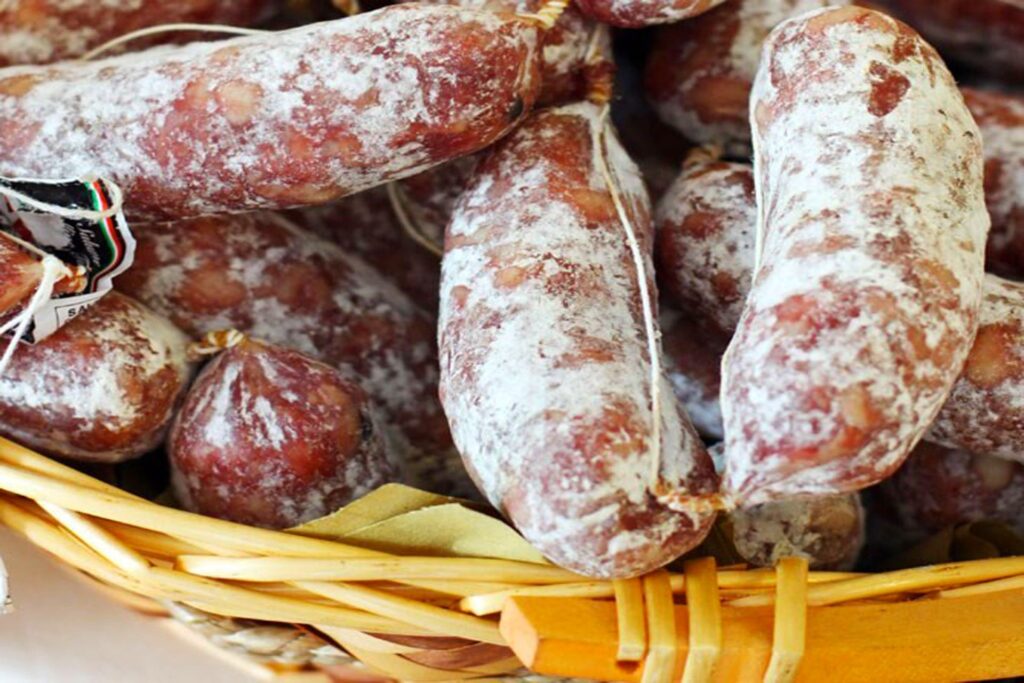
Photo Credit: Italiano Please
6. Extra Virgin Olive Oil:
Though it makes only a tiny percentage of the total production of Italian olive oil (less than 2%), Umbrian EVOO (extra virgin olive oil) wins a lot of awards. The five distinct growing areas offer a variety of taste profiles with ever-present notes of spice and herbs. Would you like to buy a travel-safe bottle of extra virgin olive oil in Perugia? You will find it in many retail shops like Antica Spezieria Bavicchi. To fully immerse yourself in this magical world, visit the Antico Frantoio Trampolini, just a 15-minute walk outside Perugia’s historic center. You can schedule a tasting tour and see their tiny olive oil museum.
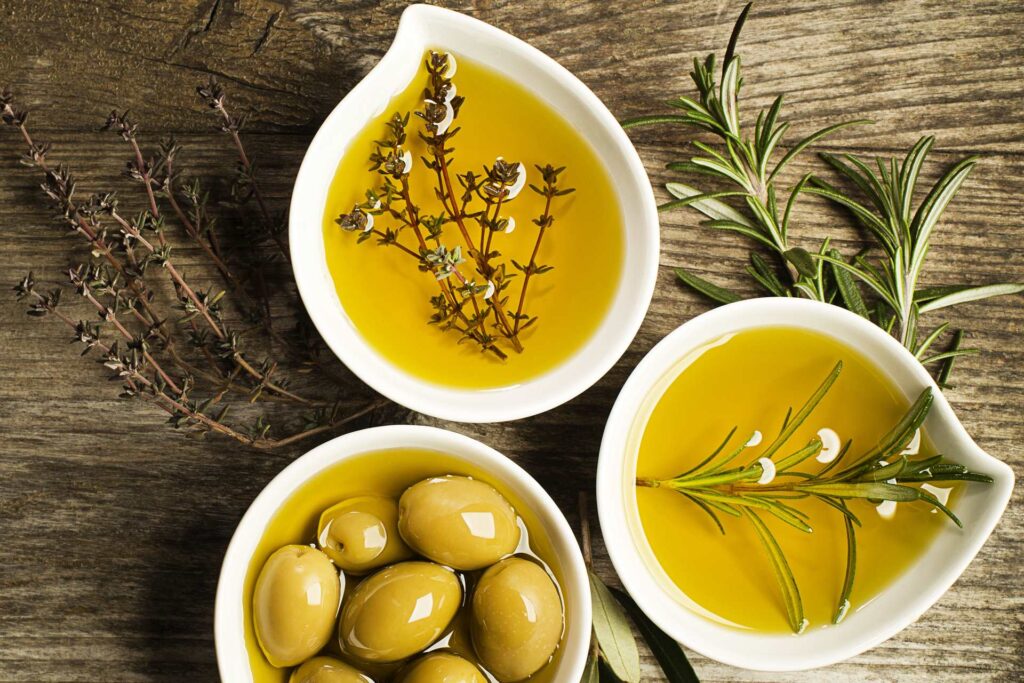
7. Fagiolina del Trasimeno:
Grown since Etruscan times near Lago Trasimeno, this nutrient-packed bean (and Slow Food Presidio) was nearly extinct due to post-war migration and the laborious, entirely manual cultivation process. Thankfully, a few family-run farms are still willing to plant, sow and harvest it. The tender, buttery, nutty flavored beans can be tossed in salads, made into a bruschetta topping, added to soups or just eaten plain with a simple seasoning of olive oil, salt and pepper. Packages of the dried beans are sold all over Perugia—they don’t require a long soaking period. They are also a regular menu item at Osteria a Priori, on Via dei Priori.
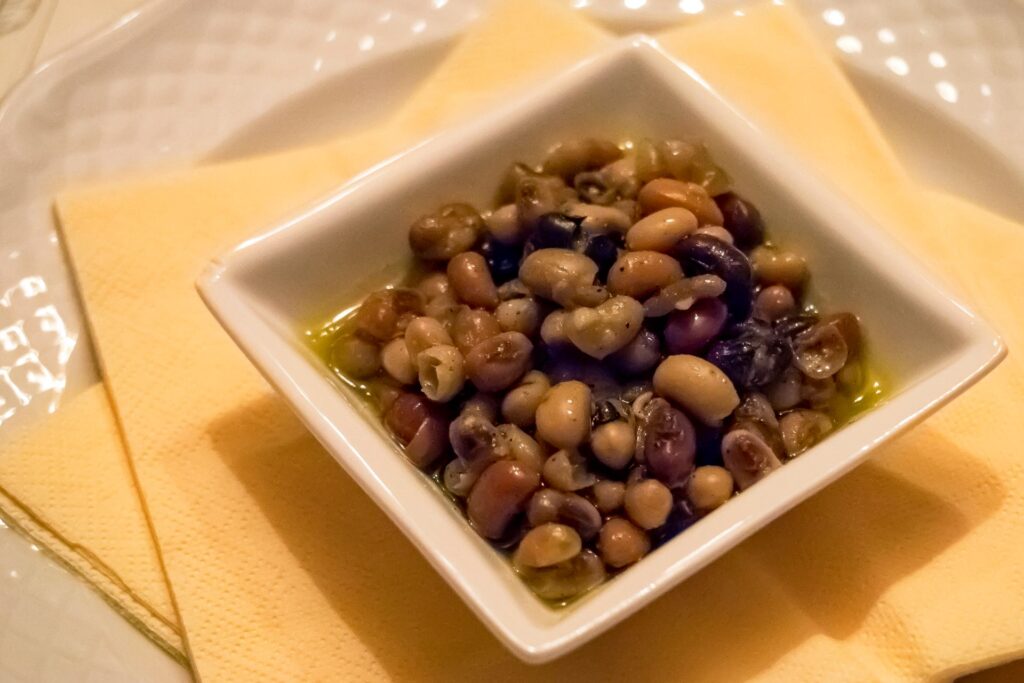
Photo Credit: John Ludas
8. Imbrecciata (also spelled ‘mbrecciata):
Umbria is known for its legumes and grains. There’s no better way to sample the region’s bounty than a bowl of this traditional harvest soup of lentils, beans, corn, chickpeas, cicerchie (wild chickpeas) and spelt topped with croutons and a drizzle of extra virgin olive oil. For a taste of the best soups in Perugia, head to Ristorante Fontanella di Porta Sole and order the “Tris di Assaggi”. This is a sampling of chef Gino’s classic Umbrian soups: Imbrecciata, Quadrucci e Ceci (pasta and chickpeas) and Crema di Fave (cream of fava beans). After lunch walk out the door to your left. At the end of the street is a magical view of the Umbrian countryside and the rooftops below.
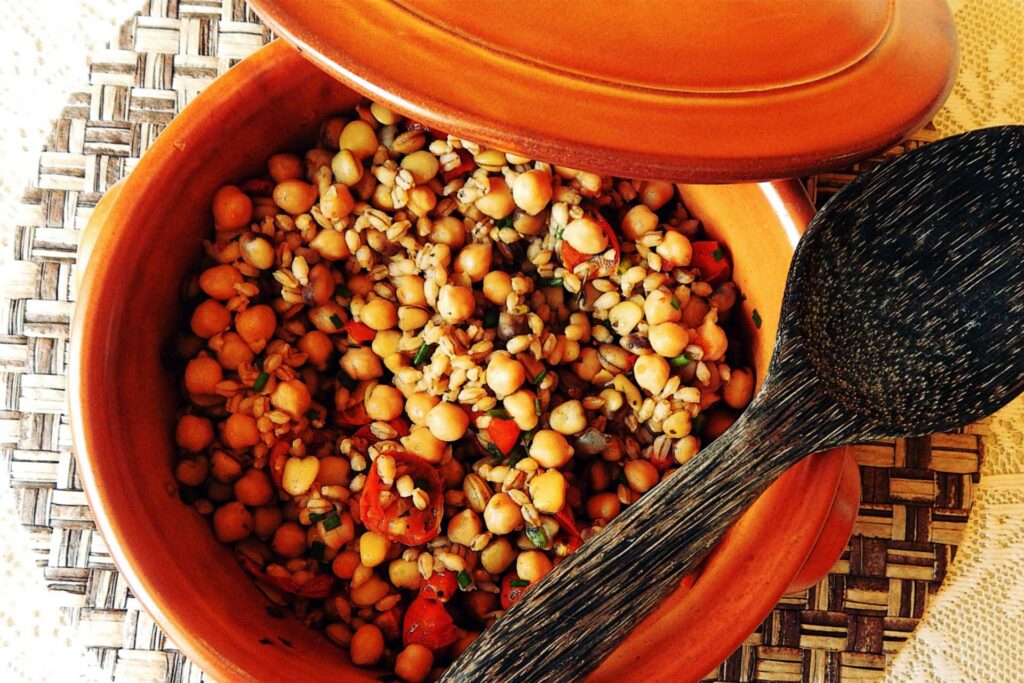
Photo Credit: Vegourmandes
9. Torta al Testo:
This traditional Umbrian flatbread is associated with “Cucina Povera,” the romantic-sounding name for the stuff the poor masses once had to eat. Today it’s still made according to a simple recipe, although the “testo”— a stone or brick tile in ancient times — has been replaced by a round, griddle-like pan. This pan is used for cooking the bread on a cooktop or over an open flame. Torta al Teso is often served with soups and stews or “farcita” (stuffed like a sandwich) with various meats and cheeses. Adonella at Osteria a Priori serves her freshly baked Torta al Testo with a selection of dishes. Another local favorite is Testone in Piazza Matteotti where it’s cooked the ancient way—over an open flame. Try a classic with Umbrian sausage and bitter greens.
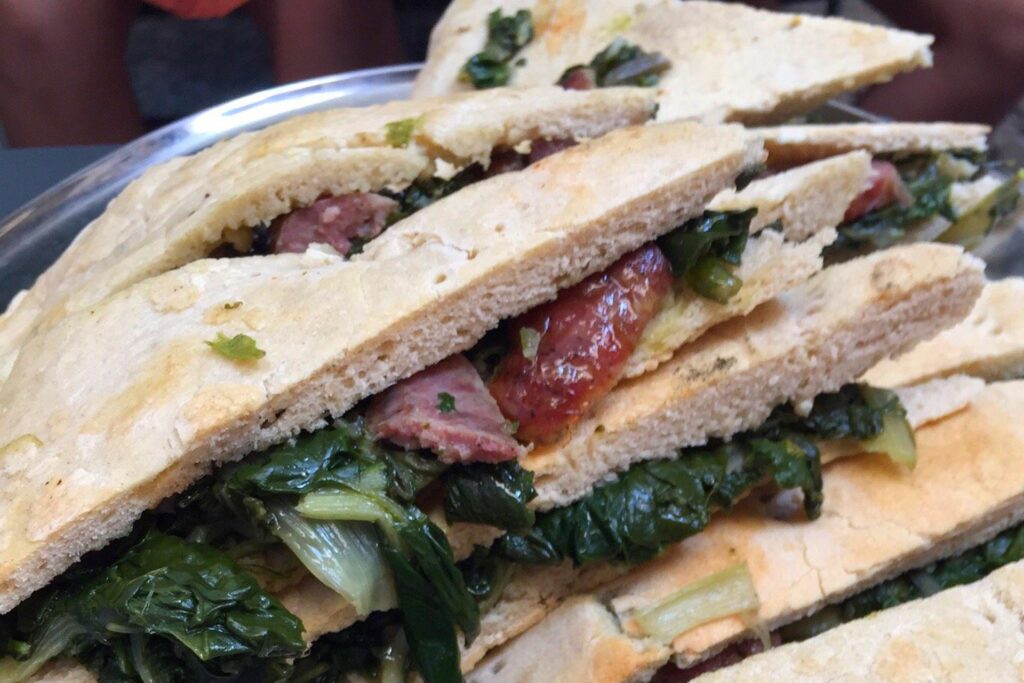
Photo Credit: John Ludas
10. Chocolate:
It should come as no surprise that in a town with a chocolate tradition, Perugina and its Baci is not the only game around. For the best selection of packaged chocolates—from Perugina and lesser-known brands such as Vannucci and Augusta Perusia—head to the Antica Spezieria Bavicchi on Via dei Priori. Here you can also sample and buy Umbrian Chocolate Liqueurs. For freshly made chocolates, check out Augusta Perusia on Via Pinturicchio or Turan Café in Piazza IV Novembre. In the latter, you can also buy lovingly gift-wrapped packages, and sign up for chocolate making and chocolate tasting classes with Turan’s chocolatier Giulia. Her laboratorio is located just across the street.
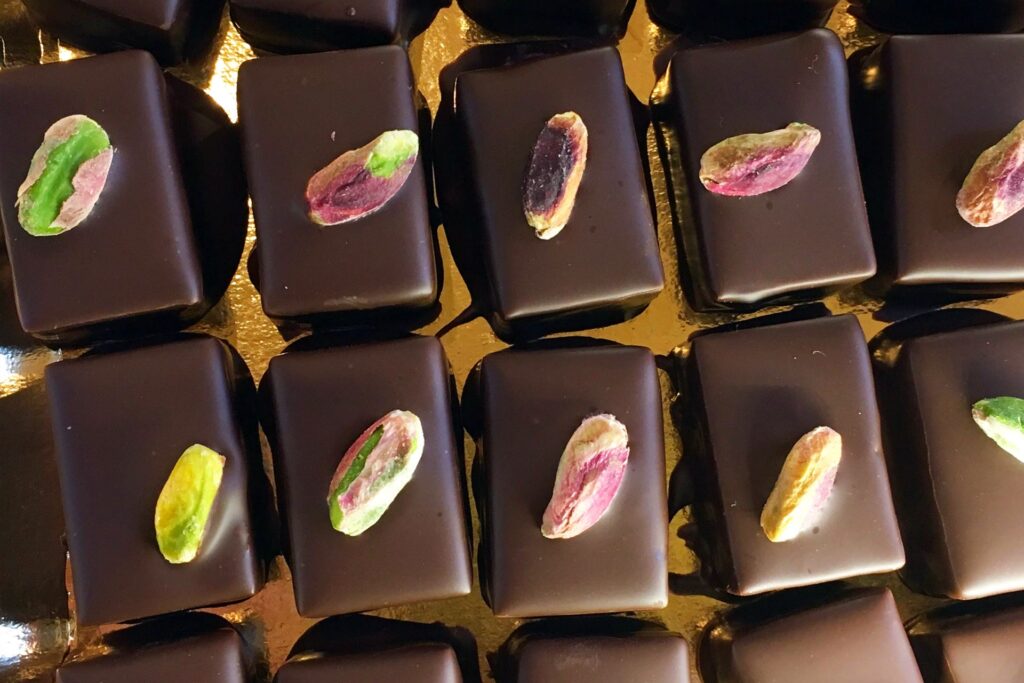
Would you like to discover more about Umbrian foods and the best restaurants in Perugia?
Sign up for our newsletter to receive our insider tips in your inbox, or book an authentic tour with Via Del Vino!
Read our blog posts
-
Shopping in Perugia: Materia Ceramica
If you are shopping in Perugia, you’ll find a world of small shops and local restaurants on Via dei Priori…
-
Palazzo della Penna: One of Perugia’s Hidden Museums
The Civic Museum at Palazzo della Penna in Perugia (Museo Civico Palazzo della Penna) is worth a visit not only…
-
Ruthless Popes & Restless Nobles: The story of Perugia’s Rocca Paolina
Standing in Giardini Carducci, Perugia, with its 360-degree views of the rolling Umbrian countryside, it’s hard to imagine that directly…
